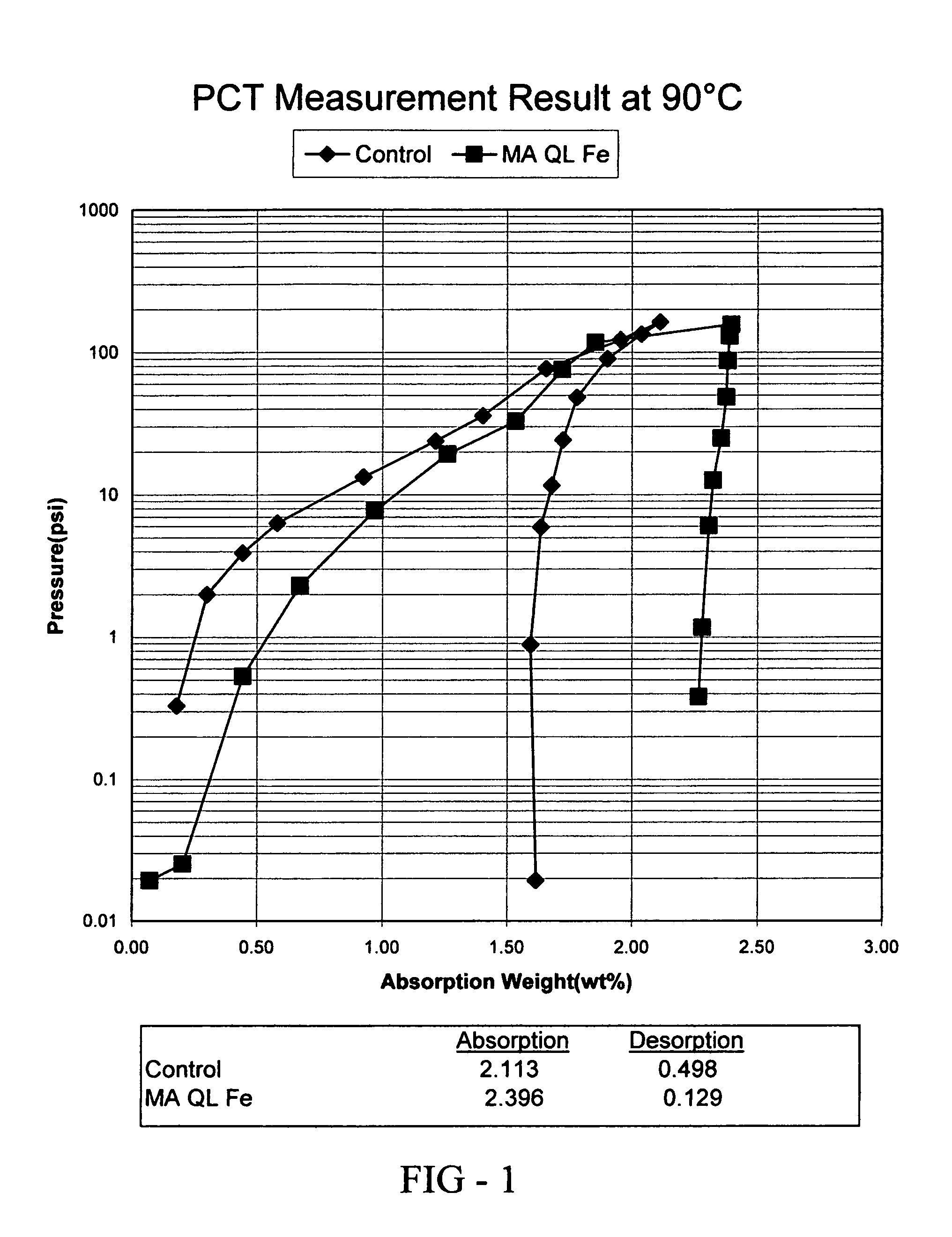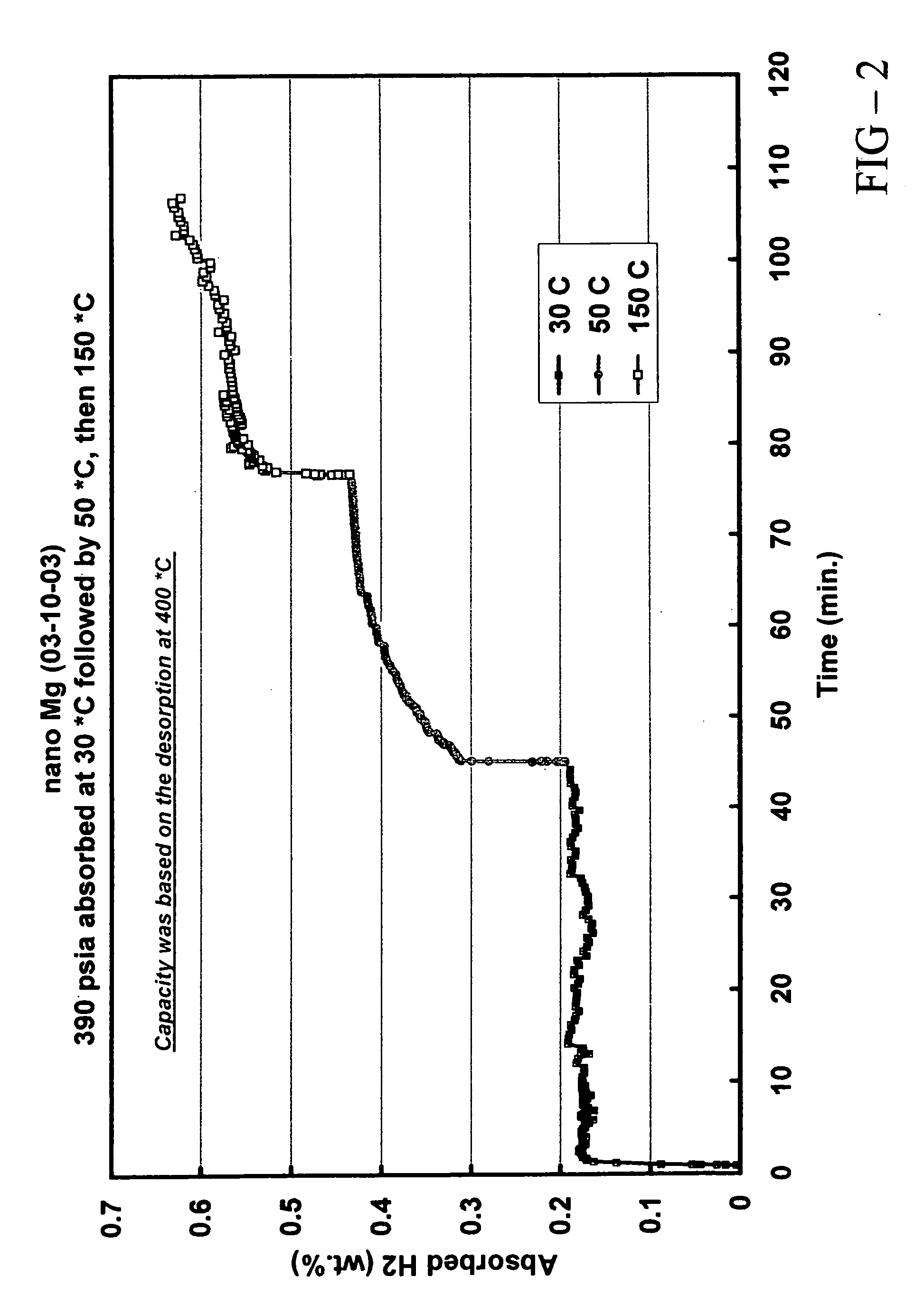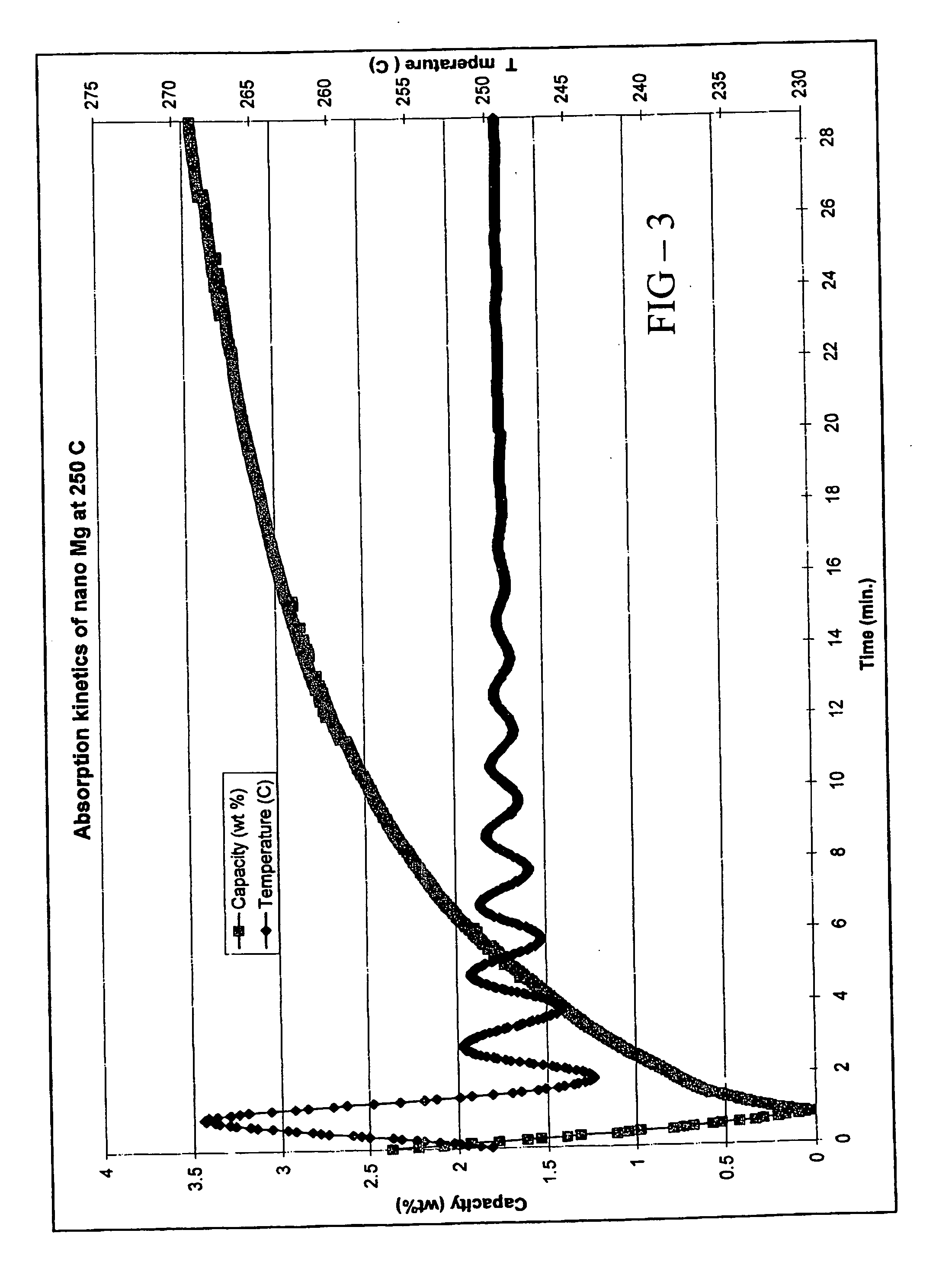Quantum limit catalysts and hydrogen storage materials
a technology of hydrogen storage materials and catalysts, applied in the field of catalysts, can solve the problems of scarcity of fossil fuels, escalating costs, and impending energy crisis in the world, and achieve the effect of promoting the formation
- Summary
- Abstract
- Description
- Claims
- Application Information
AI Technical Summary
Benefits of technology
Problems solved by technology
Method used
Image
Examples
example 1
[0074] In this example, the preparation and properties of a quantum limit iron catalyst is described. The catalyst includes atomic aggregations of Fe and is prepared using sonochemical synthesis. Iron carbonyl (Fe(CO)5) was used as the iron precursor. 19.5 g of iron carbonyl was placed in 80 mL of decahydronaphthalene (Decalin) in a beaker and subjected to sonication. The iron carbonyl was protected from air and the sonication was completed in a dry box under a nitrogen atmosphere. A 750 W sonicator operating at 75% intensity was used to provide the ultrasound used in the synthesis. Sonication occurred for 8 hours using a 50% duty cycle (ultrasound was alternated on and off in equal time intervals over the 8 hours). Upon termination of the reaction, 0.5 g of quantum limit iron product was recovered. The product was analyzed using X-ray diffraction (XRD) and found to consist of aggregations of Fe having an average size of 16-20 Å.
[0075] The hydrogen absorption and desorption charact...
example 2
[0080] In this example, the preparation and properties of a quantum limit Mg catalyst are described. Conventional Mg is a well known hydrogen storage material that provides a particularly high hydrogen storage capacity due to strong bonds between Mg and H. The practical difficulty associated with conventional Mg is its poor hydrogen release (desorption) characteristics. Because of the high Mg-H bond strength, it is difficult to remove hydrogen from the storage sites of conventional Mg and accordingly high desorption temperatures are required.
[0081] The instant Mg catalyst was prepared through a thermal decomposition reaction. Mg(anthracene)·2THF was used as the Mg precursor. The precursor was an orange solid. 5.8 g of the precursor were sublimed under vacuum. At a temperature of ca. 40° C., the THF was liberated from the precursor and at a temperature of ca. 150° C., anthracene was sublimed to leave a fine Mg black powder. Analysis of the sublimation process indicated that 2.2 g an...
example 3
[0084] In this example, the preparation of a quantum limit V catalyst is described. An organometallic vanadium precursor, V(Cp)(CO)4 (Cp=cyclopentadienyl) is used in the preparation. 4.963 g of the vanadium precursor were placed in decane and refluxed until a black precipitate was formed. The precipitate was analyzed to be V and XRD and SEM analysis showed that the product consisted of aggregations of V having an average size of 40 Å.
PUM
| Property | Measurement | Unit |
|---|---|---|
| Temperature | aaaaa | aaaaa |
| Temperature | aaaaa | aaaaa |
| Percent by mass | aaaaa | aaaaa |
Abstract
Description
Claims
Application Information
 Login to View More
Login to View More - R&D
- Intellectual Property
- Life Sciences
- Materials
- Tech Scout
- Unparalleled Data Quality
- Higher Quality Content
- 60% Fewer Hallucinations
Browse by: Latest US Patents, China's latest patents, Technical Efficacy Thesaurus, Application Domain, Technology Topic, Popular Technical Reports.
© 2025 PatSnap. All rights reserved.Legal|Privacy policy|Modern Slavery Act Transparency Statement|Sitemap|About US| Contact US: help@patsnap.com



